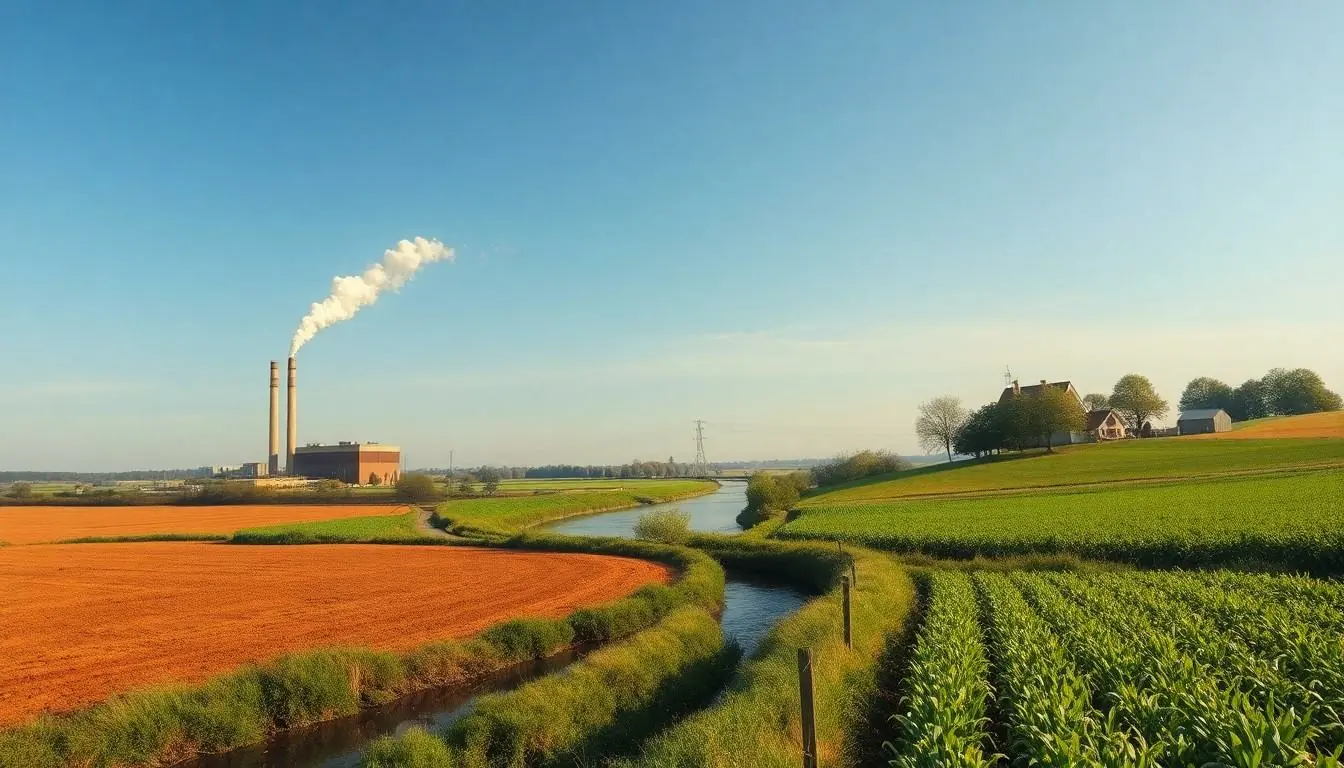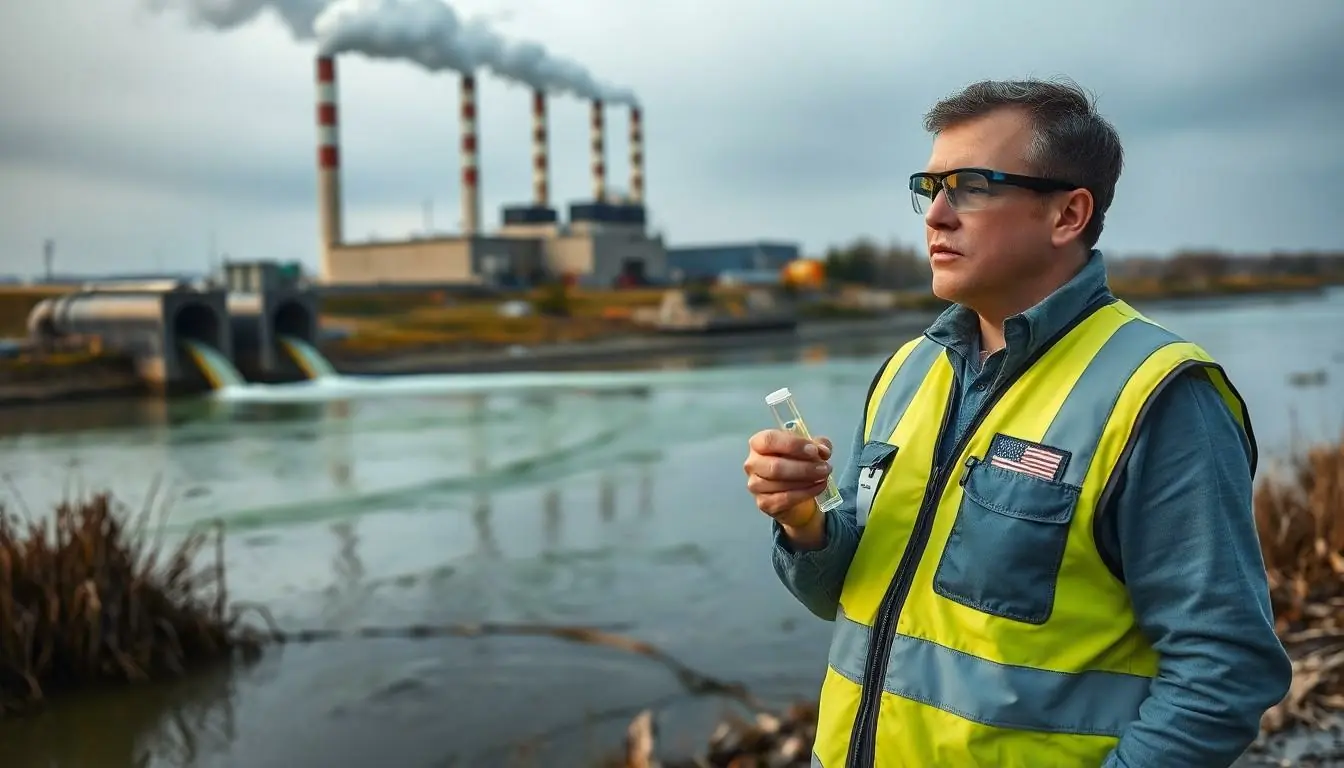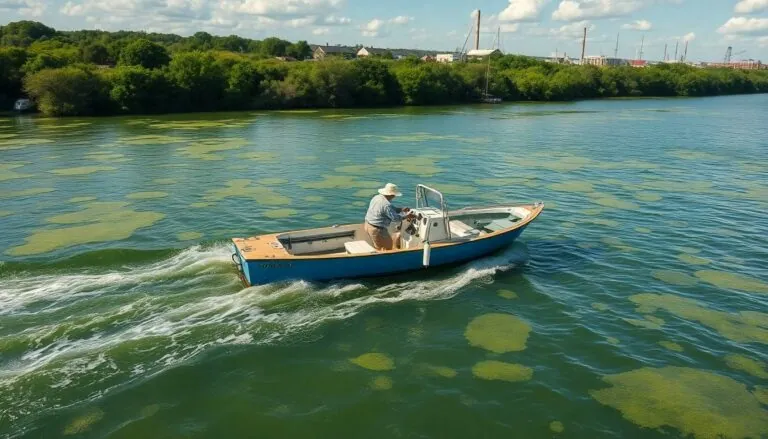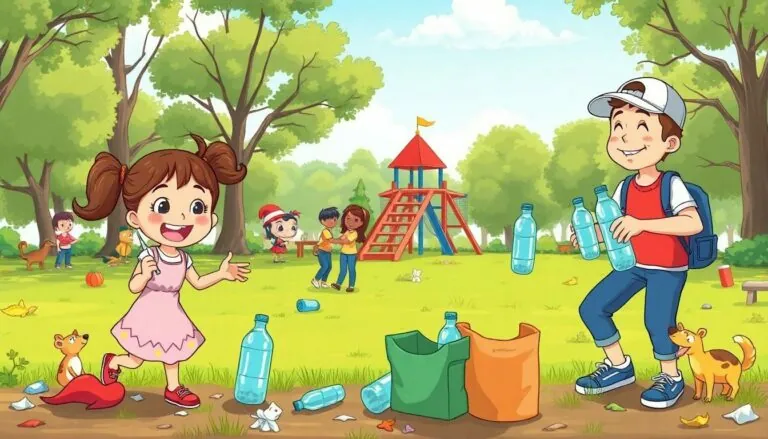Point-source pollution might sound like a fancy term for a superhero’s secret lair, but it’s actually a serious environmental villain. This type of pollution sneaks into our water bodies from a single, identifiable source, like a leaky factory or a wastewater treatment plant. Imagine a mischievous gremlin dumping its troubles into a pristine lake—it’s not pretty, and it can wreak havoc on ecosystems and human health.
Table of Contents
ToggleWhat Is Point-Source Pollution?
Point-source pollution refers to contaminants that enter water bodies from a specific, identifiable location. Factories and wastewater treatment plants often serve as common sources, discharging pollutants directly into rivers, lakes, or oceans. This type of pollution contrasts with non-point-source pollution, which originates from multiple scattered sources.
Monitoring point-source pollution involves regular assessment of discharge permits that set limits on pollutant levels. Significant attention centers on parameters like heavy metals, nutrients, and organic compounds. Managing these discharges effectively is crucial to maintaining water quality.
Regulatory agencies, such as the Environmental Protection Agency (EPA), enforce laws to control point-source discharge. The Clean Water Act establishes guidelines for industrial and municipal wastewater treatment, aiming to reduce harmful effects on aquatic ecosystems. Compliance with these regulations not only protects the environment but also safeguards public health.
Awareness about point-source pollution has grown, prompting advocacy for stricter regulations and better technology. Communities affected by pollution often push for accountability from industries. Transparency in reporting emissions fosters trust and encourages responsible practices.
Identifying and addressing point-source pollution presents an ongoing challenge for environmental management. Restoring affected water bodies requires concerted efforts from government agencies, businesses, and local communities. Sustainable practices, such as advanced wastewater treatment technologies, can significantly reduce the impact of point-source pollution.
Understanding point-source pollution is essential for developing effective strategies to combat water pollution. Through continuous education and improvement, it becomes possible to mitigate the harmful effects on ecosystems and public health.
Sources of Point-Source Pollution

Point-source pollution originates from specific locations that discharge pollutants into the environment. Understanding the primary sources helps in addressing their impact on water quality.
Industrial Discharges
Industrial discharges serve as major contributors to point-source pollution. Factories release various contaminants, including heavy metals and chemicals, directly into nearby water bodies. These discharges occur through processes like manufacturing and cooling water discharge. Regulatory agencies impose limits on allowable discharge levels, ensuring factories reduce their environmental footprint. The Environmental Protection Agency (EPA) monitors compliance with regulations, emphasizing the need for industries to adopt cleaner technologies. Utilizing best practices in waste management can help mitigate the adverse effects of industrial discharges.
Agricultural Runoff
Agricultural runoff also plays a significant role in point-source pollution. Fertilizers and pesticides applied to crops often wash into streams and rivers during rainfall events. This runoff increases nutrient levels in water bodies, leading to problems like algal blooms and ecosystem disruption. Farmers can implement better management practices, such as precision agriculture, to minimize these harmful effects. Sustainable practices, including buffer zones and cover crops, enhance soil health and reduce runoff. Moreover, agencies encourage farmers to adopt these methods to balance agricultural productivity with environmental preservation.
Effects of Point-Source Pollution
Point-source pollution poses serious threats to ecosystems and human authorities. The direct entry of pollutants into water bodies creates a series of repercussions.
Environmental Impact
Ecosystems suffer significantly from point-source pollution. Nutrient overloads often lead to algae blooms, which deplete oxygen levels in water. Aquatic life, such as fish and amphibians, experience stress or mortality as a result. Habitat degradation occurs when toxins accumulate in sediments. Coastal areas become particularly vulnerable, affecting the biodiversity of marine habitats. Contaminants like heavy metals and chemicals disrupt food chains and species interactions. The overall health of rivers, lakes, and oceans declines, leading to long-term ecological consequences.
Human Health Concerns
Human populations face various health risks stemming from point-source pollution. Contaminated drinking water can contain harmful substances, leading to diseases. Respiratory issues arise from inhaling pollutants released into the air. Long-term exposure to hazardous chemicals is linked to chronic illnesses and disorders. Vulnerable groups, such as children and the elderly, experience even greater susceptibility to adverse effects. Communities surrounding polluted sites often express concerns about health complications and diminished quality of life. Regulatory measures aim to minimize these risks and safeguard public health.
Regulatory Measures
Regulatory measures play a critical role in managing point-source pollution. Effective legislation and best practices guide industries in minimizing their environmental impact.
Legislation Overview
The Clean Water Act serves as a cornerstone for regulating point-source pollution in the United States. This landmark legislation establishes water quality standards and requires permits for discharges from identifiable sources. Agencies like the Environmental Protection Agency (EPA) monitor compliance and set limits on substances such as heavy metals, chemicals, and nutrients. Recent amendments seek to improve enforcement and address emerging contaminants. Additional regulations may address specific pollutants linked to local industries, ensuring tailored oversight.
Best Practices for Mitigation
Industries can implement several best practices to mitigate point-source pollution. Utilizing advanced treatment technologies reduces the concentration of harmful pollutants before discharge. Practicing regular monitoring ensures compliance with established permits. Adopting cleaner production techniques minimizes waste generation at the source. Training employees on environmental standards enhances overall awareness and responsibility. Collaborating with local authorities fosters transparency and encourages community engagement in pollution reduction efforts.
Point-source pollution poses significant risks to both ecosystems and human health. The direct discharge of pollutants from identifiable sources emphasizes the need for stringent regulatory measures and community involvement. As industries adopt cleaner technologies and better management practices, the potential for reducing these harmful impacts increases.
Ongoing advocacy for transparency and accountability will play a crucial role in fostering responsible practices among businesses. By prioritizing collaboration between regulatory agencies, industries, and local communities, it’s possible to develop effective strategies that protect water quality and public health. Addressing point-source pollution is essential for ensuring a sustainable future for both the environment and society.





